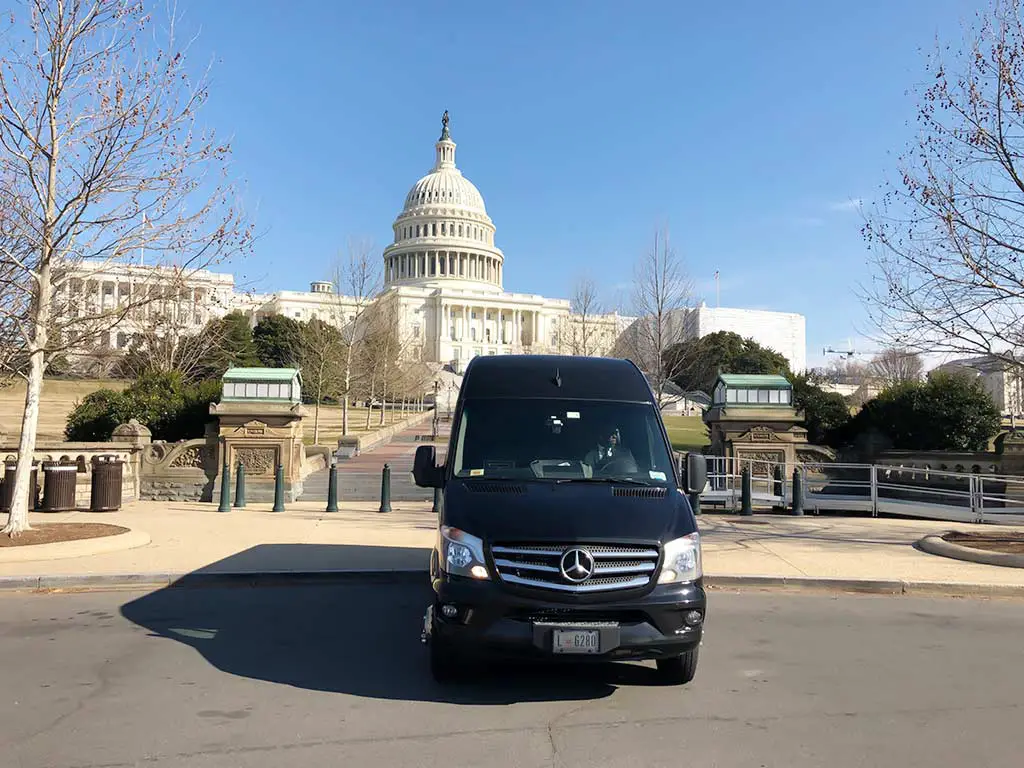Curious about how to make the most of a self-guided tour in Washington DC? Exploring the nation’s capital on your own terms can be an incredibly enriching experience.
From iconic landmarks to hidden gems, DC offers a treasure trove of sights and sounds that cater to all interests. A well-planned self-guided tour allows you the freedom to dive deep into history, art, and culture at your own pace.
Whether you’re marveling at the majestic monuments on the National Mall, delving into the rich collections of the Smithsonian museums, or discovering quaint neighborhoods brimming with character, a self-guided tour in Washington DC ensures a personalized adventure.
In this guide, we’ll provide essential tips and a structured plan to help you navigate the city efficiently, ensuring you don’t miss out on its must-see attractions.
How to Plan A Self-Guided Tour on Washington DC
Planning a self-guided tour in Washington DC can be an exciting endeavor that allows you to explore the city at your own pace. Here’s a comprehensive guide to help you plan your adventure:
1. Research and Prioritize Your Interests

Start by identifying what interests you the most in Washington DC. Are you a history buff eager to explore iconic monuments, or are you more interested in the city’s vibrant arts scene?
Make a list of must-see attractions and prioritize them based on your interests and the time you have available.
2. Create a Flexible Itinerary

While it’s essential to have a plan, flexibility is key to enjoying a self-guided tour. Map out your main stops, but leave room for spontaneous detours.
Allocate time for each site, considering both travel time and the duration you’ll spend at each location. Group attractions that are close to each other to maximize your time.
3. Download Maps and Helpful Apps

Having a reliable map is crucial for navigating the city efficiently. Download offline maps and apps like Google Maps, DC Metro and Bus, and museum guides.
These tools will help you find your way, locate nearby points of interest, and check public transportation schedules.
4. Consider Transportation Options

Washington DC is well-connected by public transportation, including the Metro, buses, and bike-sharing programs. Decide how you’ll get around based on your itinerary.
The Metro can be the fastest way to cover longer distances while walking or biking is ideal for exploring neighborhoods and clusters of attractions.
5. Plan for Meals and Breaks

Incorporate meal breaks and downtime into your itinerary. DC offers a wide range of dining options, from food trucks and casual eateries to fine dining. Plan to try local specialties, such as half-smokes and mumbo sauce. Also, identify parks or cafes where you can relax and recharge.
6. Check Opening Hours and Entry Requirements

Before setting out, verify the opening hours, ticket requirements, and any COVID-19-related restrictions for the attractions you plan to visit.
Some museums and monuments may require advance reservations or have limited hours. Websites and official apps often provide the most current information.
7. Pack Essentials for the Day

Prepare a small day pack with essentials such as water, snacks, a hat, sunscreen, and comfortable walking shoes. A portable charger for your phone and a small first aid kit can also be handy. Weather in DC can be unpredictable, so check the forecast and dress in layers.
Sample Itinerary
To give you an idea, here’s a sample itinerary for a day in Washington DC:
- Morning: Start at the National Mall, visiting the Lincoln Memorial, Washington Monument, and the World War II Memorial.
- Late Morning: Explore the Smithsonian National Museum of American History.
- Lunch: Enjoy lunch at the museum café or a nearby food truck.
- Afternoon: Head to the United States Capitol and the Library of Congress.
- Late Afternoon: Stroll through the vibrant Capitol Hill neighborhood.
- Evening: Conclude with dinner at a popular restaurant in Penn Quarter or Chinatown.
By following these tips and creating a thoughtful plan, you can make the most of your self-guided tour in Washington DC, ensuring a memorable and enjoyable experience.
Basic Attractions and Landmarks in Washington DC
Washington DC is a city brimming with history, culture, and iconic landmarks. Whether you’re a first-time visitor or a seasoned traveler, the nation’s capital offers a wealth of attractions that cater to a variety of interests.
Here’s an in-depth look at some of the basic attractions and landmarks that should be on every visitor’s itinerary.
The National Mall
The National Mall is often referred to as “America’s Front Yard.” This expansive park stretches from the United States Capitol to the Lincoln Memorial and is home to many of the city’s most famous monuments and museums.
It’s a great starting point for exploring DC’s rich history and culture.
The Lincoln Memorial
A tribute to the 16th President of the United States, the Lincoln Memorial is an iconic symbol of freedom and unity.
The grand statue of Abraham Lincoln sits majestically within a Greek temple-style structure, and the site is also known for Martin Luther King Jr.’s “I Have a Dream” speech, adding to its historical significance.
The Washington Monument
Standing at over 555 feet, the Washington Monument is the world’s tallest obelisk and honors the first President of the United States, George Washington.
Visitors can take an elevator to the top for panoramic views of the city. The surrounding grounds are ideal for leisurely walks and picnics.
The United States Capitol
The Capitol is not only the seat of the United States Congress but also a striking architectural marvel. Visitors can take guided tours to learn about the legislative process and the history of the building. Don’t miss the impressive Rotunda and the National Statuary Hall.
The Smithsonian Museums
DC is home to the Smithsonian Institution, the world’s largest museum complex, which includes 19 museums and galleries.
Highlights include the National Museum of American History, the National Air and Space Museum, and the National Museum of Natural History. These museums offer free admission and a wealth of exhibits that cater to all interests.
The White House
As the official residence and workplace of the President of the United States, the White House is one of the most recognizable buildings in the world.
While public tours are limited and must be requested in advance, the White House Visitor Center offers detailed exhibits and information about the history of the residence.
The National Gallery of Art
The National Gallery of Art boasts a stunning collection of paintings, sculptures, and decorative arts from the Middle Ages to the present.
The West Building features European works, including pieces by Leonardo da Vinci and Rembrandt, while the East Building focuses on modern and contemporary art.
The Jefferson Memorial
Dedicated to Thomas Jefferson, the third President of the United States and the principal author of the Declaration of Independence, the Jefferson Memorial is a serene and picturesque site located on the Tidal Basin.
The rotunda features a statue of Jefferson surrounded by excerpts from his writings.
The United States Holocaust Memorial Museum
This powerful museum provides a somber and moving exploration of the Holocaust. Through exhibitions, artifacts, and personal stories, visitors gain a deep understanding of the events and impact of this dark chapter in history.
Washington DC’s attractions and landmarks offer a diverse and enriching experience for all visitors.
From monumental memorials and political landmarks to world-class museums and galleries, the city provides a profound insight into the history and culture of the United States.
Whether you’re spending a day or a week, these must-see sites ensure a memorable visit to the nation’s capital.
Tips for a Successful Self-Guided Tour on Washington DC
Exploring Washington DC on a self-guided tour allows for a flexible and personalized experience. Here are some detailed tips to ensure your tour is successful and enjoyable:
Do Your Research
Before heading out, research the attractions you plan to visit. Look into their history, significance, and any special exhibits or events. Websites, travel blogs, and guidebooks can provide valuable insights and help you prioritize your must-see locations.
Plan Your Route
Create a detailed itinerary that includes your primary destinations. Use maps to group attractions that are close to each other, minimizing travel time and maximizing your time spent exploring.
Be sure to consider the layout of the city and the locations of various landmarks.
Utilize Public Transportation
Washington DC’s Metro system is efficient and easy to navigate. Familiarize yourself with the Metro map and consider purchasing a SmarTrip card for convenient access to trains and buses.
Public transportation can save you time and energy, especially when traveling between distant sites.
Start Early
To beat the crowds and make the most of your day, start your tour early. Many popular attractions, such as the Smithsonian museums and the National Mall monuments, can become crowded later in the day.
Early mornings also offer cooler temperatures and better photo opportunities.
Stay Flexible
While it’s good to have a plan, be prepared to adjust your itinerary as needed. Unexpected events, such as special exhibits, longer-than-expected lines, or sudden weather changes, can disrupt your schedule.
Staying flexible allows you to enjoy spontaneous discoveries and experiences.
Take Advantage of Free Attractions
Washington DC is home to numerous free attractions, including the Smithsonian museums, the National Zoo, and many national monuments. Take full advantage of these cost-free experiences to enrich your tour without straining your budget.
Prepare for Walking
Comfortable footwear is essential, as many of DC’s attractions are best explored on foot. The National Mall alone spans over two miles from the Capitol to the Lincoln Memorial. Bring water, wear sunscreen, and take breaks to avoid fatigue.
Pack Smart
Carry a small backpack with essentials such as water, snacks, a hat, sunscreen, and a portable charger for your phone.
Weather in DC can be unpredictable, so check the forecast and dress in layers. Having these items on hand will keep you comfortable throughout your tour.
Engage with Local Culture
Don’t miss the opportunity to experience DC’s vibrant neighborhoods, local cuisine, and cultural events.
Areas like Georgetown, Dupont Circle, and Adams Morgan offer unique shops, restaurants, and entertainment options that provide a deeper understanding of the city’s character.
By following these tips, you can ensure a well-organized and enjoyable self-guided tour of Washington DC, making the most of your time in the nation’s capital.
Safety Concern for a Self-Guided Tour on Washington DC
Safety is a paramount concern when embarking on a self-guided tour of Washington DC. Here are some important safety tips to ensure a secure and enjoyable visit:
- Stay Aware of Your Surroundings: Always be conscious of what’s happening around you, especially in crowded areas or when using public transportation. Avoid distractions like excessive phone use.
- Secure Your Belongings: Keep your valuables, such as wallets, phones, and cameras, secure and out of sight. Use a money belt or a crossbody bag that can be worn in front.
- Avoid Isolated Areas: Stick to well-populated and well-lit areas, especially at night. While many parts of DC are safe, some neighborhoods can be less secure after dark.
- Use Trusted Transportation: When using rideshares or taxis, verify the driver’s identity and car details before entering. Public transportation is generally safe, but be vigilant during off-peak hours.
- Stay Hydrated and Dress Comfortably: The weather in DC can be unpredictable. Wear comfortable clothing and shoes, and stay hydrated, particularly during the hot summer months.
- Emergency Contacts: Keep a list of emergency contacts, including local emergency services, your country’s embassy, and your accommodation’s contact information.
- COVID-19 Precautions: Follow any local health guidelines, including wearing masks in crowded places and maintaining social distancing when necessary.
- Respect Local Laws and Regulations: Familiarize yourself with DC’s local laws and regulations to avoid any legal issues. This includes rules about public behavior, photography, and entry into certain areas.
By adhering to these safety tips, you can ensure a secure and worry-free experience while exploring the many wonders of Washington DC on your self-guided tour.
Wrapping Up
Embarking on a self-guided tour of Washington DC offers a unique and personalized way to explore the nation’s capital.
With careful planning, a flexible itinerary, and an awareness of safety considerations, you can fully immerse yourself in the rich history, culture, and vibrant neighborhoods of this iconic city.
From the monumental landmarks of the National Mall to the hidden gems in its diverse districts, DC promises an enriching experience for every traveler.
Equip yourself with maps, utilize public transportation, and take advantage of the many free attractions available.
By staying prepared and open to spontaneous discoveries, you can ensure a memorable and enjoyable adventure, making the most of all that Washington DC has to offer.




Scott Jung